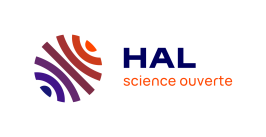Détail du document
Identifiant
oai:HAL:hal-04258183v1
Sujet
Out-of-field dose X-rays imaging dose radiotherapy radioactivity ionizing radiation cancer dosimetry healthy tissue exposure Monte Carlo patient exposure paediatric brain cancer Organ dose glioma anthropomorphic phantom proton therapy computed tomography CT imaging simulation particle transport PRIMO TOPAS PENELOPE [PHYS.PHYS.PHYS-MED-PH]Physics [ph... [SDV.CAN]Life Sciences [q-bio]/Can...Auteur
de Saint-Hubert, Marijke Boissonnat, Guillaume Schneider, Uwe Bäumer, Christian Verbeek, Nico Esser, Johannes Wulff, Jörg Stuckmann, Florian Suesselbeck, Finja Nabha, Racell Dabin, Jérémie Vasi, Fabiano Radonic, Stephan Rodriguez, Miguel Simon, Anne Catherine Journy, Neige Timmermann, Beate Thierry-Chef, Isabelle Brualla, LorenzoLangue
enEditeur
HAL CCSD;Frontiers
Catégorie
sciences : physics
Année
2023
Date de référencement
15/12/2023
Mots clés
modulated including organ sv thyroid 0 complete dose exposure cancer testes radiotherapy paediatric brain msv proton doses treatment patient therapyRésumé
International audience; Background In radiotherapy, especially when treating children, minimising exposure of healthy tissue can prevent the development of adverse outcomes, including second cancers.
In this study we propose a validated Monte Carlo framework to evaluate the complete patient exposure during paediatric brain cancer treatment.
Materials and methods Organ doses were calculated for treatment of a diffuse midline glioma (50.4 Gy with 1.8 Gy per fraction) on a 5-year-old anthropomorphic phantom with 3D-conformal radiotherapy, intensity modulated radiotherapy (IMRT), volumetric modulated arc therapy (VMAT) and intensity modulated pencil beam scanning (PBS) proton therapy.
Doses from computed tomography (CT) for planning and on-board imaging for positioning (kV-cone beam CT and X-ray imaging) accounted for the estimate of the exposure of the patient including imaging therapeutic dose.
For dose calculations we used validated Monte Carlo-based tools (PRIMO, TOPAS, PENELOPE), while lifetime attributable risk (LAR) was estimated from dose-response relationships for cancer induction, proposed by Schneider et al.
Results Out-of-field organ dose equivalent data of proton therapy are lower, with doses between 0.6 mSv (testes) and 120 mSv (thyroid), when compared to photon therapy revealing the highest out-of-field doses for IMRT ranging between 43 mSv (testes) and 575 mSv (thyroid).
Dose delivered by CT ranged between 0.01 mSv (testes) and 72 mSv (scapula) while a single imaging positioning ranged between 2 μ Sv (testes) and 1.3 mSv (thyroid) for CBCT and 0.03 μ Sv (testes) and 48 μ Sv (scapula) for X-ray.
Adding imaging dose from CT and daily CBCT to the therapeutic demonstrated an important contribution of imaging to the overall radiation burden in the course of treatment, which is subsequently used to predict the LAR, for selected organs.
Conclusion The complete patient exposure during paediatric brain cancer treatment was estimated by combining the results from different Monte Carlo-based dosimetry tools, showing that proton therapy allows significant reduction of the out-of-field doses and secondary cancer risk in selected organs.
de Saint-Hubert, Marijke,Boissonnat, Guillaume,Schneider, Uwe,Bäumer, Christian,Verbeek, Nico,Esser, Johannes,Wulff, Jörg,Stuckmann, Florian,Suesselbeck, Finja,Nabha, Racell,Dabin, Jérémie,Vasi, Fabiano,Radonic, Stephan,Rodriguez, Miguel,Simon, Anne Catherine,Journy, Neige,Timmermann, Beate,Thierry-Chef, Isabelle,Brualla, Lorenzo, 2023, Complete patient exposure during paediatric brain cancer treatment for photon and proton therapy techniques including imaging procedures, HAL CCSD;Frontiers

Projection-Specific Heterogeneity of the Axon Initial Segment of Pyramidal Neurons in the Prelimbic Cortex
heterogeneity projection-specific

